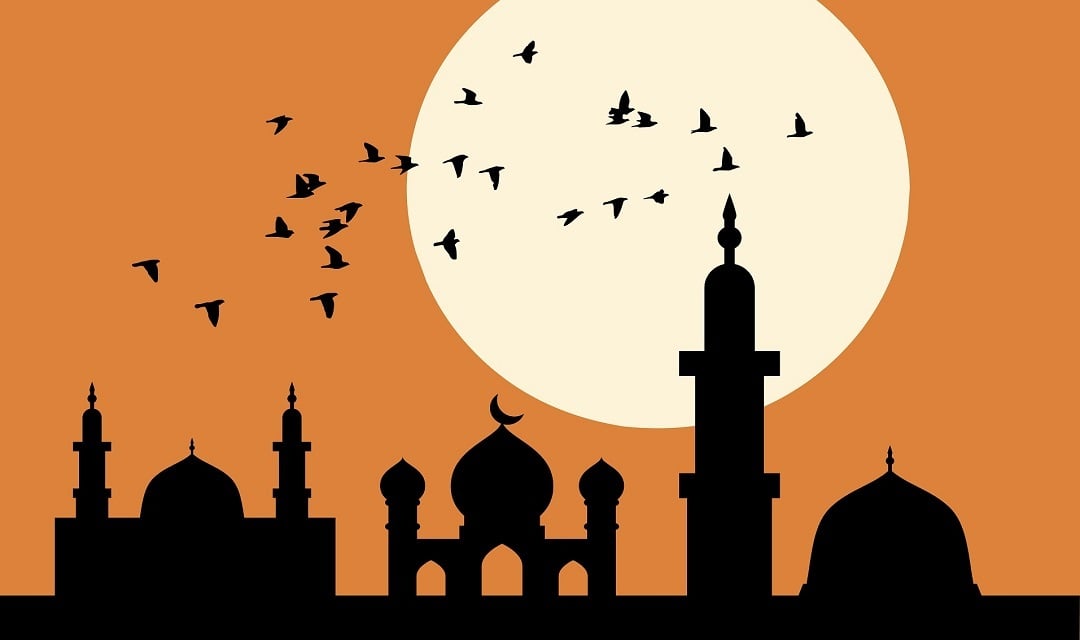This article first appeared in the Christian Research Journal, volume 41, number 1 (2018). For further information about the Christian Research Journal please click here.
At certain times of the year, as we approach the anniversary of 9/11 or when there is a terrorist attack like the most recent ones in New York,1 I’m prone to reminisce about a trip I took to Iran several years ago. On the plane, I sat next to an accomplished Persian Muslim woman with two master’s degrees. She graciously offered me assistance, should I need it, while in Iran. As I deplaned, I was kissed by two Muslim men and heard the word salaam (peace).
The following morning, I met Fatima, a translator whose countenance quite literally lit up the room. She seemed amused when I told her that I had not ventured out of the hotel and assured me that I could walk the streets of Tehran in the middle of the night with complete confidence. She was right. And for the next five nights, I walked the streets of Tehran and was routinely greeted with smiles and acts of kindness.
In short, without exception, the Persians I encountered in Iran were extraordinarily hospitable. My encounters emphasized the distinction between individual Muslims and the religion of Islam. Many Muslims are peaceful and tolerant; however, the history of Islam demonstrates conclusively that it is not a religion of peace, despite protestations to the contrary whenever a tragic event like the ones in New York occurs.
Indeed, Islam is the only significant religious system in history with laws that mandate violence against the infidel. This makes Islam a religious ideology espousing terrorism as a permanent policy rather than as a temporary expedient.2 Such is historical reality, from the early seventh-century Medina massacres to the most recent global Islamic jihadist attack in our day.
In considering whether Islam is peaceful, the Ottoman Empire begs consideration. Although it reached its zenith in the sixteenth century, its most notable atrocities are of recent vintage. We rightly remember Adolf Hitler’s genocidal mania but have regrettable amnesia respecting Abdul Hamid II, who initiated his ethnic cleansing policies at the turn of the century by systematically slaughtering 300,000 Armenians. By the time World War I broke out, the Muslim leadership of Turkey had committed itself to eliminating the Christian population. All told, by 1923, three and a half million Christians had been exterminated.3
Ironically, it was Hitler who cynically anticipated the collective amnesia of the modern world. “I have given orders to my death units to exterminate without mercy or pity, men, women, and children belonging to the Polish-speaking race,” he said. “After all, who remembers the extermination of the Armenians?”4
Indeed, who remembers the Qurayza Jews butchered at the hands of Muhammad,5 the massacres in India,6 the horrors exacted on humanity at the hands of the Ottoman Turks, or for that matter the indignity in November 2015 when, during a moment of silence in remembrance of the Paris massacre, Muslim soccer fans in Istanbul booed or broke out in chants, including, “Allahu Akbar, Allahu Akbar, Allahu Akbar”?7
Who remembers earlier that year when Muslim militants in Syria tried to force two Christian women and six Christian men to convert to Islam? On their refusal, the women were brutally raped before being beheaded alongside the men. The same day, militants cut off the fingertips of a twelve-year-old boy in a failed attempt to force his Christian father to convert.8 When the father refused the forced conversion, he was tortured and subsequently crucified in adherence to the Qur’anic command, “I will cast terror into the hearts of those who disbelieve. Therefore strike off their heads and strike off every fingertip of them” (8:12 Shakir).
Who, for that matter, remembers Father Jacques Hamel, who was brutally murdered on July 26, 2016, in the north of France while dispensing the body and blood of Christ?9 Is Islam a religion of peace and tolerance? Permit the teachings of the Qur’an and fourteen centuries of violence to answer for you. —Hank Hanegraaff
Hank Hanegraaff is president of the Christian Research Institute and host of the Bible Answer Man daily broadcast and the Hank Unplugged podcast. Hank has authored more than twenty books, including The Complete Bible Answer Book — Collector’s Edition, revised and updated (Thomas Nelson, 2016) and M-U-S-L-I-M: What You Need to Know about the World’s Fastest-Growing Religion (Thomas Nelson, 2017), from which this article is adapted.
NOTES
- See Frank Miles, “New York Christmas Security Ratchets Up after Global String of Terror Attempts,” Fox News, December 19, 2017, http://www.foxnews.com/us/2017/12/19/newyorkchristmas-security-ratchets-up-after-global-string-thwarted-terror-plots.html.
- In the first two sentences of this paragraph, I paraphrase Serge Trifkovic, Defeating Jihad: How the War on Terrorism Can Be Won — In Spite of Ourselves (Boston: Regina Orthodox Press, 2006), 57.
- See Serge Trifkovic, The Sword of the Prophet: Islam: History, Theology, Impact on the World (Boston: Regina Orthodox Press, 2002), 113–25; Raymond Ibrahim, “The Forgotten Genocide: Why It Matters Today,” Raymond Ibrahim, April 24, 2013, http://raymondibrahim.com/2013/04/24/the-forgotten-genocide-why-it-matters-today/; “The Armenian Genocide and Turkey’s Attempt to Deny It,” Armenian National Committee of America, July 6, 2015, http://web.archive.org/web/20150706045638/http:/www.anca. org/genocide/denial.php; Taner Akcam, A Shameful Act: The Armenian Genocide and the Question of Turkish Responsibility (New York: Henry Holt and Company, 2006), 42–48, 105–108.
- See Reverend Father Raphael Moore, “In Memory of the 50 Million Victims of the Orthodox Christian Holocaust, Compiled by Rev. Archimandrite Nektarios Serfes,” Serfes.org, October 1999, http://www.serfes.org/orthodox/memoryof.htm; see also “Adolf Hitler, Chancellor of Nazi Germany (1933–45),” Armenian National Institute, http://www.armenian-genocide.org/hitler.html; cf. Stefan Ihrig, “How the Armenian Genocide Shaped the Holocaust,” The Daily Beast, January 24, 2016, http://www.thedailybeast.com/articles/2016/01/24/how-the-armenian-genocide-shaped-the-holocaust.html; Elias Maglinis, “Ataturk in the Nazi Imagination,” Ekathimerini, March 7, 2016, http://www.ekathimerini.com/209963/article/ekathimerini/life/ataturk-in-the-nazi-imagination.
- Muhammad’s earliest biographer, Ibn Ishaq (c. AD 704–767), is illustrative of the Islamic sources that chronicle the killings of hundreds of Qurayza Jews forced to kneel in trenches filled with bodies and blood before being brutally beheaded by the apostle: “The apostle went out to the market of Medina (which is still its market today) and dug trenches in it. Then he sent for them and struck off their heads in those trenches as they were brought out to him in batches.” Ishaq forthrightly chronicles that the number of Jews slaughtered “were 600 or 700 in all, though some put the figure as high as 800 or 900.” Moreover, as the Qur’an makes clear, in addition to those who Muhammad slew, many others (in context, wives and children) he “made prisoners” (33:26). See Ibn Ishaq, The Life of Muhammad: A Translation of Ishaq’s Sīrat Rasūl Allāh, trans. A. Guillaume (Oxford: Oxford University Press, 1955, 2001), 464 (see 461ff. for the full account); Sahih al–Bukhari 59.447; 5.59.362; Sunan Abu-Dawud 39.4390. See also Al-Tabari, The History of al-Tabari: The Victory of Islam, vol. 8, trans. Michael Fishbein (Albany: SUNY Press, 1997), 27–41, kalamullah.com/Books/The%20History%20Of%20Tabari/Tabari_Volume_08.pdf. Cf. Al-Waqidi, The Life of Muhammad:Al-Wāqidī’s Kitāb al-Maghāzī, ed. Rizwi Faizer, trans. Rizwi Faizer, Amal Ismail, and AbdulKader Tayob (London: Routledge, 2011), 252 (244ff.).
- See Trifkovic, Sword of the Prophet, 109–13.
- See “Turkish Soccer Fans Boo Moment of Silence for Paris Attacks Victims,” CBSN, November 18, 2015, http://www.youtube.com/watch?v=5-_dqcgirf4; for full context, see “Turkiye Yunanistan Macı Oncesinde Paris Saldırılarında Olenler Icin Yapılan Saygı Duruşu Islıklandı,” Medyascope.tv, November 17, 2015, http://www.youtube.com/watch?v=dtMiwVpYAmo
- “Christian Workers in Syria Crucified, Beheaded,” Christian Aid Mission, October 1, 2015, http://www.christianaid.org/News/2015/mir20151001.aspx?SC=MIR; see also Nina Shea, “ISIS and Religious Genocide in the Mideast,” National Review, October 9, 2015, http://www.nationalreview.com/article/425288/isis-and-religious-genocide-mideast-nina-shea.
- Adam Nossiter and Hannah Olivennes, “Jacques Hamel, 85, a Beloved French Priest, Killed in His Church,” New York Times, July 26, 2016, http://www.nytimes.com/2016/07/27/world/europe/jacques-hamel-85-a-beloved-french-priest-killed-in-his-church.html?_r=0.









